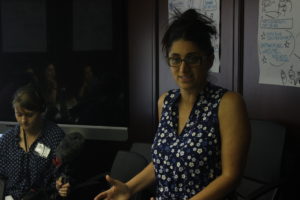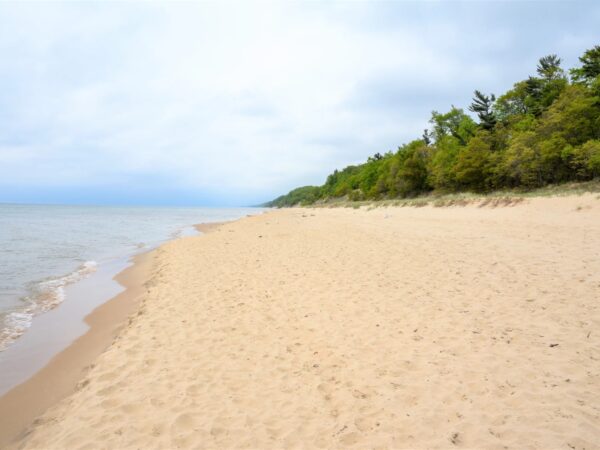
No daily deadlines. No manufactured news conferences. Plenty of time to ask questions. And a little bit of kayaking and fishing.
During the last week of June, I was part of a group of journalists from around the region who traveled with the Institute for Journalism and Natural Resources through Ohio, Michigan and Indiana. We talked with communities and experts on water quality issues in the Great Lakes region.
Ultimately, this fellowship will make my work as news director of Great Lakes Now that much better, starting with this series of snapshots where I’ll introduce you to some of the people we met who are working on and particularly affected by some of the biggest water quality issues. They’ll tell you why their work and experiences matter to all of us in the Great Lakes region and beyond, and I’ll help you learn more.
Where We Were: Detroit and Flint
The Issue: When communities complain about drinking water quality and cost
The Overview and What You Need to Know:
Detroit and Flint could be case studies in how minority communities suffered dire consequences after their concerns were ignored.
In Detroit, after former Gov. Rick Snyder appointed Kevyn Orr as emergency manager and the city filed for bankruptcy, the water for the thousands of Detroit homes in debt to the Detroit Water and Sewage Department started getting shut off. It made international headlines in 2014 as Detroit’s Chapter 9 case progressed through federal court, and the city sought to correct its balance sheet in part by collecting water debt and cutting service to those who owed too much.
Criticism then and now has been swift and strong.
“It didn’t matter that the entire state voted against Public Act 4, emergency management,” said Cecily McClellan, one of the founders of We the People of Detroit, a grassroots civil rights organization.
At the same time, the cost of Detroit water continued to rise, making it harder for people to pay or catch up on their water bills.
“Nobody wants to be without water if they can afford it,” McClellan said. “What I’m paying today (on a monthly basis) is what I could have been paying for a 90-day bill five years ago.”
McClellan described numerous people and families she worked with who just needed an affordable payment plan to get back on their feet and pay their water bill that We the People of Detroit had to fight to get them.
Meanwhile in Flint, an emergency manager’s decision in 2014 to switch the source of the city’s water and not prepare for corrosion of pipes because of the new supply’s differing chemistry resulted in lead-poisoned water in thousands of homes.
While those lead service lines are in the process of getting replaced, much of the city is still on filtered and bottled water as a precaution.
“Right away there were complaints about color and odor and taste,” said Dr. Mona Hanna-Attisha, the doctor whose research exposed the Flint water crisis, “lots of red flags right away from the beginning of the switch.”
Even once Flint water is safe, there will be some residents who will never trust or drink Flint water again, Hanna-Attisha said.
“I will never say water is safe anywhere in Flint or not in Flint,” she said.
It’s created a lack of trust outside of the community in Flint and a new awareness of environmental issues in those same people.
“The kids are getting an awakening regarding these things,” said Mike Harris, a community leader with the Flint Development Center, which launched a program teaching 16- to 18-year-olds how to collect water samples and send them for testing.
“The community can only build trust within itself,” Harris said.
More Great Lakes Now News and Information on this Topic:
Featured Image: Water is unfit for human consumption, Photo by woodleywonderworks via flickr.com cc 2.0






